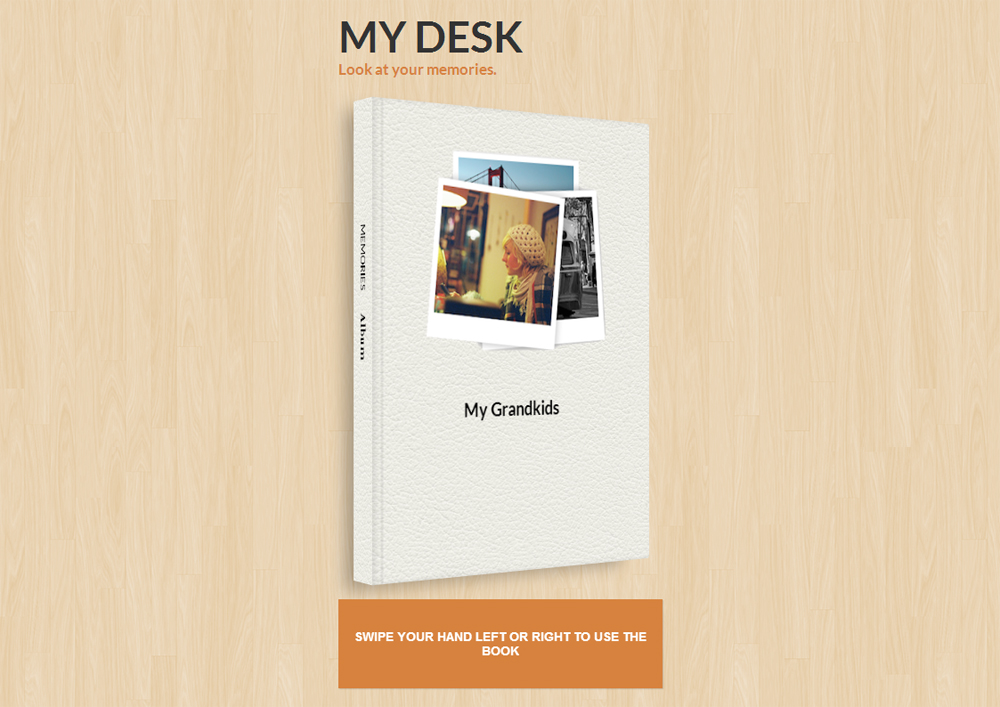World Window

Frontend
For the frontend we worked with skeuomorphic design. We wanted to uphold the metaphor of a book, specifically a physical photo album, because that resonated more with users since they were used to photo albums in their day to day life. We have a wooden background to symbolize a home, specifically for the nursing home residents since their nursing home has wooden floors and walls. Most importantly we made a change to the album itself, giving it a custom-created leather texture. This was made after observing the look and feel of photo albums many of our elderly users already possessed. Now our album has a leather texture giving it the nostalgia associated with photo albums, rather than having a shiny blue background that looks mostly like a facebook background. This will help clear the confusion that the book is actually a photo album and make it feel like a physical object while the user is interacting with it.
Backend
On the backend, we experimented with new gestures to see what might be easier for our users. We have the following gestures implemented:- Swipe. This is the Kinect swipe. This worked for about half of our users. The other half moved their hands too slowly to trigger the swipe.
- Escape. This is the Kinect raised-left-hand gesture. This proved unreliable -- when the Kinect was positioned perfectly, it worked well, but it was extremely difficult to position correctly.
- Crank. This is the Kinect extending-hands gesture. This worked with very high accuracy, but there wasn't an intuitive way to differentiate between turning the page left and right, and the gesture seemed a little hard for our user group.
- Manual Escape. Rather than using Kinect's built-in escape, which wasn't triggering reliably and only supports the left hand, we manually implemented a raised-hands gesture. This was the highest fidelity of all of our gestures. It was clear how to turn the page left versus right (raise your left or right hand), the gesture can be slow, and if the user doesn't trigger it at first, their reaction is to raise their hand higher, which causes the gesture to be triggered (in other words, the users' error correcting instincts are correct).